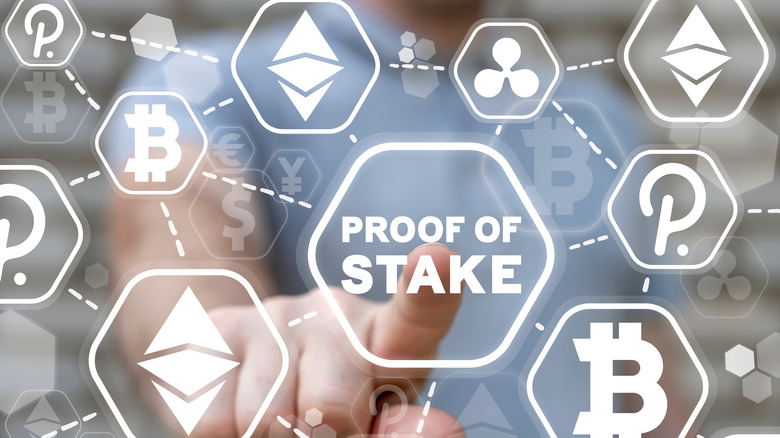What Exactly Is Blockchain?
Cryptocurrency has taken the world by storm, with people making and losing fortunes according to the value of Bitcoin, Ethereum, Dogecoin, Shiba Inu, and countless others. While cryptocurrency may get the lion's share of media coverage, closely associated is blockchain technology, on which cryptocurrency transactions are registered. The two go hand-in-hand, but blockchain has far wider applications and uses for all types of businesses.
In fact, according to Blockdata, 81 of the top 100 companies are already using blockchain technology. What's more, Research and Markets predicts the blockchain market will grow at a compound annual growth rate (CAGR) of 68.4%, reaching some $67.4 billion by 2026.
Despite the growing importance of blockchain technology, many still don't understand exactly what it is, or why so many companies are investing in it. Even those who may know a little about it may still not understand how its application extends far beyond cryptocurrency.
Blockchain's origins
The basic concept of blockchain technology dates back to at least 1991. According to the Institute of Chartered Accountants in England and Wales (ICAEW), Stuart Haber and W Scott Stornetta first described a way of cryptographically securing blocks of data. Nick Szabo described a decentralized digital currency in 1998, and Stefan Konst published a theory about how to implement cryptographically secured chains of data in 2000.
The technology became a reality in 2008 when an individual, or group of individuals, working under the name Satoshi Nakamoto, published a white paper outlining how modern-day blockchain works (via Investopedia). In 2009, Nakamoto released bitcoin, which became the first successful blockchain implementation. This is what brought both blockchain and bitcoin into mainstream discourse.
A few years later, in 2014, blockchain was separated from bitcoin, as the industry realized the underlying tech could have far wider uses than merely powering cryptocurrencies.
Understanding blockchain
At its most basic level, blockchain is just another way of storing data, much like a traditional database. However, unlike a traditional database where data is stored in tables and fields, blockchain data is stored in "blocks."
A key element of a blockchain is immutable data. In other words, each block can hold a specified amount of data, and once that block is filled, its data cannot be changed. Even if the data contains an error, it cannot be corrected. Instead, a new block containing a corrected version of the data is created, with both blocks available for viewing or inspection. Each of these blocks of data is joined in a string, or chain, of blocks.
One of the biggest advantages of a blockchain, versus traditional databases, is its distributed nature. While a traditional database is housed on a single server, or a group of servers, a distributed ledger resides on many different computers, with each one containing a complete copy of the ledger. Blockchain is one type of distributed ledger.
Distributed blockchains are almost impossible to compromise, since a copy of the ledger is distributed to so many computers. Even if someone were to try to change their copy of the ledger for their own gain, the other thousands of copies would make it apparent which one was altered or corrupted.
How blockchain is used
Its distributed nature is one of the reasons blockchain is becoming so popular with businesses. Financial institutions, for example, are increasingly using blockchains to store, verify, and secure financial records (via WeForum).
Rather than storing records on a single server, banks and financial institutions can store their transactions on a blockchain, protecting against the possibility of data loss or compromised data. This has helped to increase the security and integrity of international money transfers, protect against money laundering, and improve accounting compliance and audit integrity, according to Business Insider.
According to the South China Morning Post, the medical industry is also using blockchain to solve problems, including battling counterfeit COVID vaccines. Zuellig Pharma is a Singaporean health provider using SAP blockchain to power their eZTracker, tracking vaccines to ensure they're safe.
"For products registered with eZTracker and depending on the needs of our pharma principals, patients can scan the 2D data matrix on the product packaging to verify key product information like expiry date, temperature, and provenance through its app powered by blockchain," said Daniel Laverick with Zuellig Pharma.
Games, supply chains, contracts, non-fungible tokens (NFTs), royalties, voting systems, real estate transactions, and identity security are just a few of the many applications of blockchain technology.
Downsides of blockchain use
Despite its many advantages, blockchain does have some significant disadvantages, as 101 Blockchains points out. One of the biggest disadvantages is scalability. The more people are on a network, the slower it functions. The end-user often sees this in the amount of time it takes to complete a transaction when buying or selling cryptocurrencies. Similarly, while VISA can process 1,700 transactions a second, bitcoin can only process 4.6.
Environmental impact is another major disadvantage of blockchain. Blockchain relies on "miners" to verify transactions. Unfortunately, mining is a resource-intensive task that has already come under scrutiny for its impact on the environment, 101 Blockchains notes. Another potential disadvantage is also one of its main advantages: security. While blockchains are often more secure than competing technologies, they're not entirely immune. If attackers are able to gain control of 51% of a network, the attackers can then alter ledger entries, something that is otherwise impossible.
Despite these disadvantages, there are multiple improvements being developed that will, hopefully, help overcome these issues over time. In the meantime, considering the nature of blockchain technology, the sky is the limit when it comes to potential uses.




